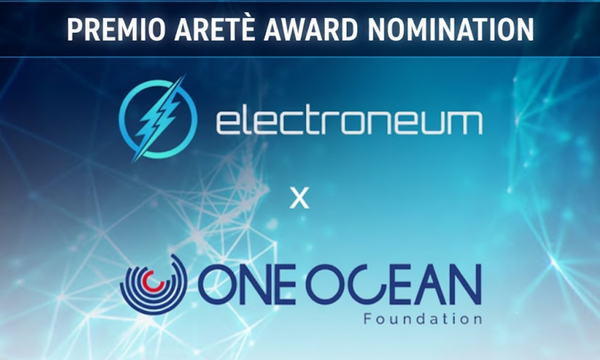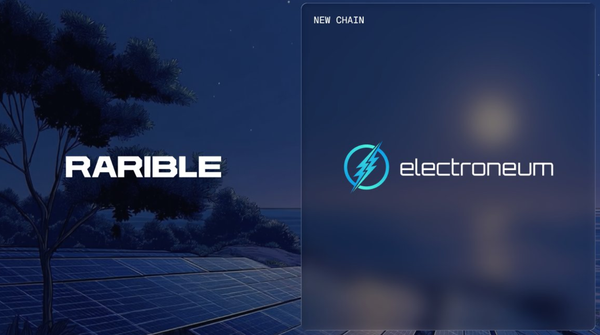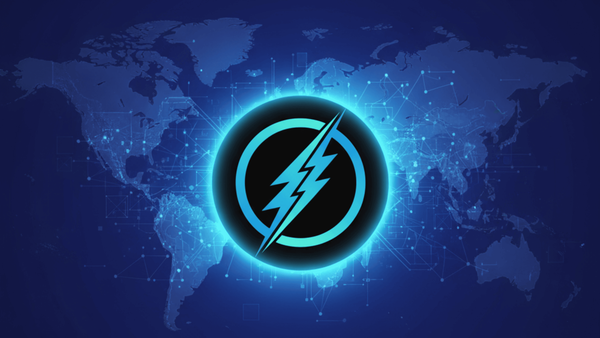Why Smart Businesses Choose Electroneum 2.0: Build on the Blockchain with Unbeatably Low Environmental Impact
In this article, we outline the importance of going green and how Electroneum 2.0 has been built from the ground up as a forward-thinking chain with eco-first principles.

When you're choosing where to build your blockchain project, the decision usually comes down to speed, cost, and developer experience.
But in 2025 and beyond, there's another factor that can make or break your launch: energy efficiency.
As the world’s businesses will eventually move parts of their operations onto blockchain technology, Electroneum 2.0 is here to provide a sustainable solution for this exciting growth in commercial enterprise.
In this article, we’ll outline the importance of going green and how Electroneum 2.0 has been built from the ground up as a forward-thinking chain with eco-first principles.
Why Your Carbon Footprint Actually Matters

Today, working towards green initiatives isn’t an option in big business. It's a competitive differentiator your customers, partners, and investors actively care about:
- Your customers will ask: Whatever you’re launching on-chain for real-world applications, end users (especially younger demographics) want to know their transactions aren't contributing to environmental harm. A blockchain with measurably low energy use gives you a story you can actually tell.
- Procurement teams have requirements: If you're planning to partner with enterprises or working with regulated industries, sustainability metrics aren't optional anymore. Many organizations now have formal policies requiring vendors to report carbon footprints and meet ESG standards.
- Your brand is on the line: Building on an energy-hungry blockchain opens you up to criticism and bad press. Building on an efficient network becomes a positive talking point in pitch decks, press releases, and funding conversations.
The bottom line: the blockchain you build on sends a signal about the company you keep, the choices you make, what kind of company you run.
Proof of Responsibility: A Different Approach to Consensus
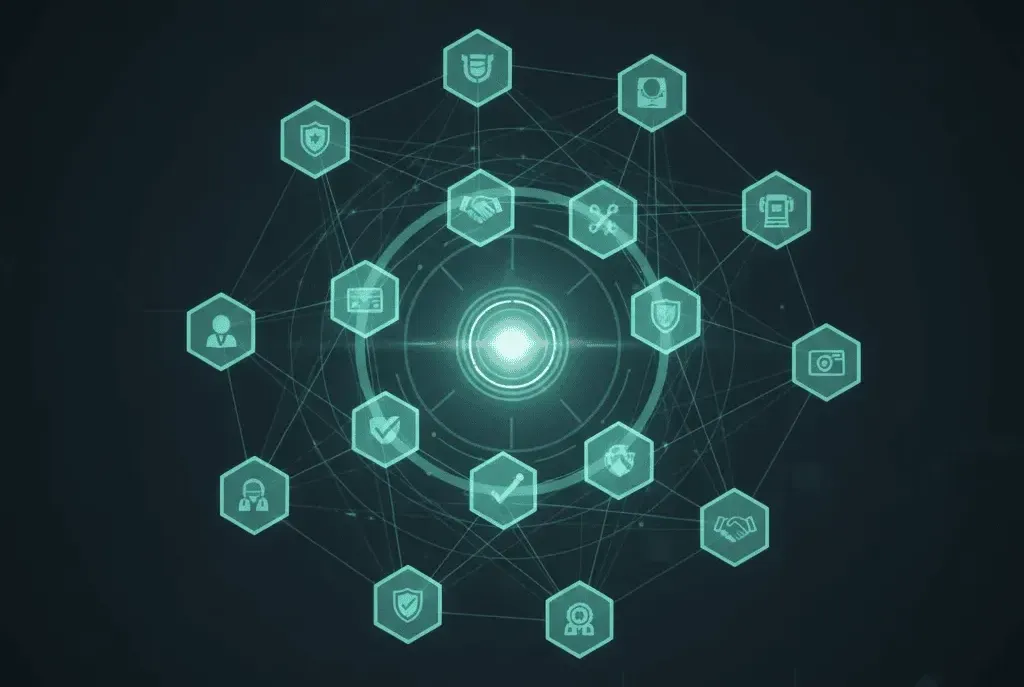
When designing Electroneum 2.0, we took a fundamentally different path from other blockchain networks. Instead of copying existing consensus mechanisms, we designed Proof of Responsibility (PoR), a system built from the ground up to prioritize energy efficiency, security, and real-world social impact.
Here's how it works: Rather than using resource-intensive mining or even traditional staking, our network is validated by a curated group of vetted nonprofit organizations and socially responsible entities.
We work with established NGOs, universities, and mission-driven organizations that go through a formal application and approval process.
- The validator approval process is decentralized by design: Each new validator must be approved by a majority vote of existing validators. This creates accountability while maintaining distributed oversight. No single entity controls who joins the network.
- Block rewards fund social good: When validators earn rewards for securing the network, those funds go directly to supporting charitable missions and fundraising for nonprofits. Network security generates measurable positive impact in the real world.
- Energy efficiency is built-in, not bolted on: Because PoR eliminates computational competition entirely, our energy consumption per transaction is near carbon-neutral (orders of magnitude lower than Proof of Work chains, and significantly more efficient than most Proof of Stake networks at comparable scale).
On Electroneum 2.0, highly trusted socially and ecologically-responsible organizations run the hardware that helps finalize transactions. You know 100% your counterparty risk doesn’t include shady cartels or sanctioned governments when you build on Electroneum.
Why PoR Creates the Lowest Carbon Footprint per Transaction
The architecture of Proof of Responsibility directly translates to energy savings at every level:
- No wasted computation: Proof of Work blockchains burn energy by design. Miners compete to solve arbitrary puzzles, and only one wins while all others waste their effort. PoR eliminates this entirely. Validators coordinate rather than compete, so every watt goes toward useful work.
- Fast finality without overhead: Our IBFT-style consensus delivers approximately 5-second finality. Transactions confirm almost instantly, which means users don't keep connections open, apps don't retry failed attempts, and the network doesn't process redundant state checks. Speed equals efficiency.
- Right-sized infrastructure: Our validators run on modest hardware, proving you don't need industrial data centers to deliver enterprise-grade security and performance. NGOs and universities operate nodes without specialized equipment or cooling systems.
The result: measurably lower kWh per confirmed transaction than any comparable blockchain, and we can prove it with auditable numbers rather than vague sustainability claims.
Two Numbers That Tell the Whole Story
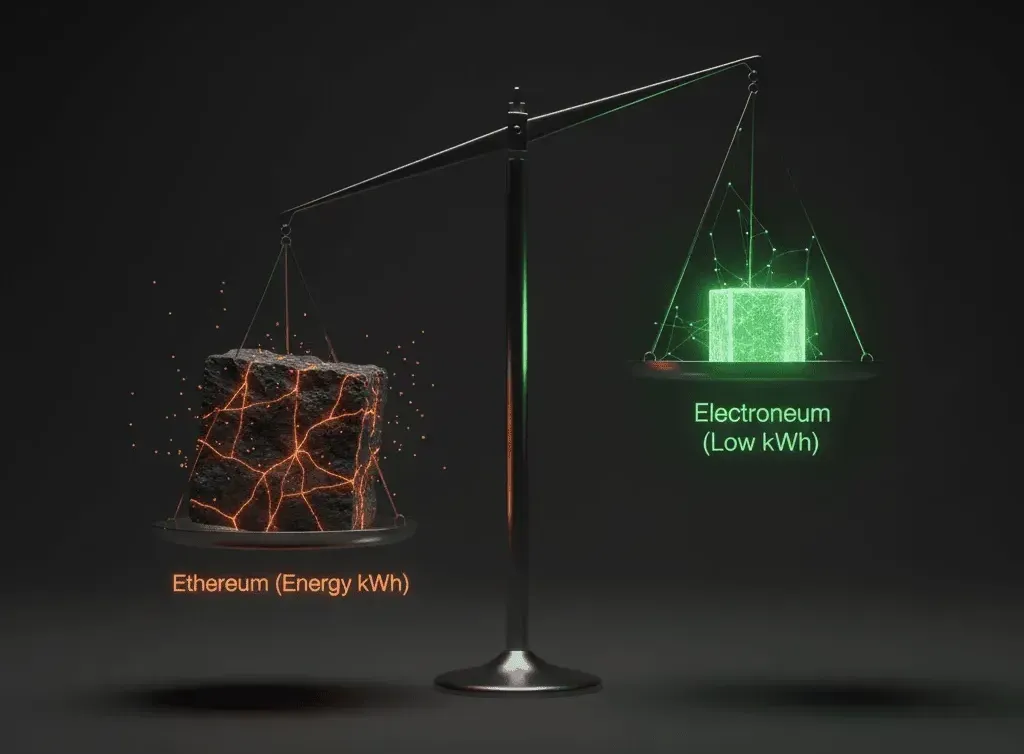
When you need to report your project's environmental impact (to investors, enterprise customers, or your own sustainability team), two metrics matter:
kWh per transaction. How much energy does one confirmed payment, credential issuance, or smart contract interaction actually cost? This is the number that plugs directly into carbon accounting and Scope 3 reporting.
kWh per active user per month. What's the steady-state energy cost of serving your user base? This scales with growth and maps cleanly to operational budgets and per-capita sustainability metrics.
Our Proof of Responsibility architecture is designed to keep both numbers as small as possible and fully auditable. You can measure them yourself, compare them to other platforms, and confidently include them in ESG reports and procurement documentation.
Electroneum 2.0 consumes about 14.4 kWh per day in total, using roughly 500x less energy than post-Merge Ethereum, running on Proof-of-Stake.
To put that into perspective:
- Ethereum (PoS) consumes enough electricity each day to power around 230 U.S. homes.
- Electroneum 2.0 (PoR) uses about the same electricity as half of one U.S. household.
Addressing the Decentralization Question

We're transparent about the trade-offs. Proof of Responsibility is a permissioned validator network. Not just anyone can spin up a node and start validating.
This differs from how most public blockchains work, and we understand that raises questions about decentralization.
From our perspective, decentralization serves the goal of building a secure, sustainable, accessible blockchain that delivers real value to real users, especially in underserved markets where financial inclusion matters most.
Our validator model achieves security through accountability rather than anonymity.
By vetting participants and distributing validation across known, reputable organizations with aligned incentives, we've eliminated the 51% attack vectors that plague traditional mining chains without burning massive amounts of energy in the process.
We believe the blockchain industry's obsession with "maximum decentralization at any cost" has led to systems that are wasteful, inaccessible, and disconnected from the problems they're supposed to solve.
Proof of Responsibility is our answer, as it’s a pragmatic, mission-driven approach that prioritizes outcomes over orthodoxy.
What This Means for Your Business
Just as businesses that steered away from building on the internet saw their competitors fly by them in quarterly performance reviews, businesses that refuse to build on-chain solutions today may find themselves becoming case studies in future textbooks.
Launch with a story
"Built on the blockchain with the lowest carbon footprint per transaction" is a concrete, defensible claim backed by measurable data. Use it in press releases, investor decks, and customer conversations.
Meet enterprise requirements
If you're targeting B2B customers, government contracts, or regulated industries, a low-carbon blockchain removes a common procurement objection before it comes up. We've seen partners close deals specifically because they could demonstrate sustainability compliance.
Attract conscientious users
Especially in payments, loyalty programs, and consumer-facing apps, sustainability is a feature your users notice and value. Younger demographics in particular expect the services they use to align with their environmental principles.
Future-proof your decision
Carbon reporting requirements are expanding globally. Choosing an energy-efficient blockchain today means you're prepared for tomorrow's compliance landscape, and you won't be scrambling to migrate or retrofit sustainability after launch.
Built for Builders, Optimized for Impact
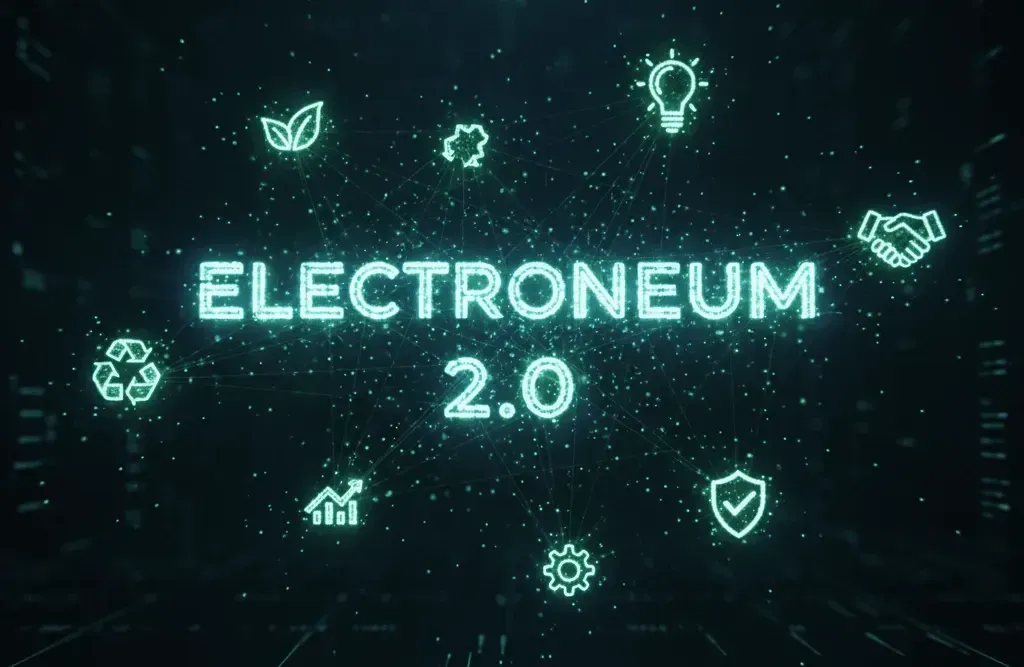
Electroneum 2.0 is both efficient and practical for developers. Our EVM compatibility means you can use the Solidity skills, tooling, and libraries already trusted by the largest development community in blockchain technology.
And our validator network (anchored by nonprofits and universities) gives you a credible sustainability narrative without greenwashing. When you build your business on Electroneum 2.0, you're contributing to a system where network rewards fund social good, not just anonymous actors cashing out.
Ready to Build?
When you're choosing where to deploy your next network upgrades, consider what that network can do, what it costs, and what it stands for.
We've built Electroneum 2.0 to offer EVM compatibility, sub-5-second finality, and the lowest carbon footprint per transaction of any comparable Layer-1 blockchain. That's a foundation you can build on (technically, economically, and ethically).
Get started today: Explore our developer documentation, spin up a test environment, and see for yourself how straightforward it is to build on a blockchain designed for efficiency and impact. Reach out to our team for a technical walkthrough, and we'll help you measure and report your project's energy footprint from day one.
In 2025, "green" means having a number you can prove and a competitive advantage you can leverage.


